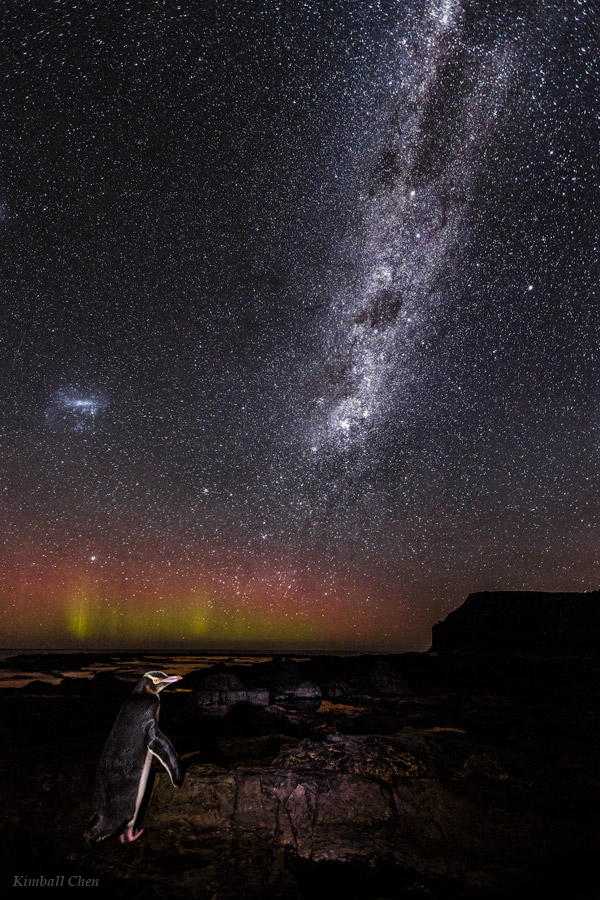A Majestic Homecoming
Description
A Notable Photo of the 2014 International Earth & Sky Photo Contest
From the photographer: “At the end of a long day at sea, an endangered yellow-eyed penguin returns to shore at Curio Bay, New Zealand. This unique and rocky beach is an ancient petrified forest that dates back to the Jurassic era. Before continuing inland to its nest, the solitary penguin lingers under the majestic Aurora Australis and Milky Way.
Conservation of not just endangered wildlife, but also the night sky is critical for the delicate balance that exists between animals and their nocturnal environment. Decreasing human light pollution allows for improved celestial cues, which scientists believe help penguins to navigate to and from their nests at night.
A cloudless night in southern New Zealand seldom occurs, and taking advantage of such a night still posed multiple challenges. In order not to scare off this skittish species nor sacrifice the wide-angle composition and proximity finally achieved in gradually crawling towards the penguin, I needed to focus-stack two separate photographs; one manually focused for the penguin, the second focused on the stars. Both photos were exposed for 30 seconds to maximize available light for the Milky Way and dimly lit aurora (due to the low-intensity of the geomagnetic storm), as well as to maintain consistency in noise quality for the foreground and background. To avoid using flash, the foreground and penguin were painted with light from a headlamp for approximately one second.”
Canon 5DIII, on tripod with remote trigger,
Canon EF 16-35mm f/2.8L II USM lens at 16mm
manual focus, ISO 3200, f2.8, 30 seconds

comments (0)